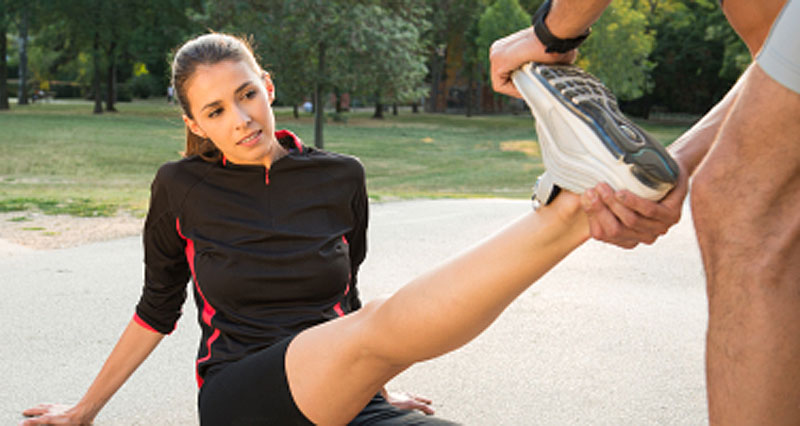First it depends what type of stretching we are talking about. What I am referring to as more of a concern is static stretching and to some extent some styles of ballistic stretching. Basically stretch and hold. This used to be commonly done with sports teams and even weightlifters but sometime in the late 80s and early 90s sports performance people realized it was causing more issues than good. Generally today almost every sports performance coach knows not to do this. But it still does exist because of outdated information and because coaches dont really know much about this side of things and just do what they did when they were a player or what they have always done as a coach. The more correct thing to do is a dynamic warmup. This involves a few things but mainly getting blood flow through the muscles and warming the body, activating muscles, and getting a full range of motion out of them through movements. So for example if the sport uses hamstrings I would have them do something like some reps of good mornings and then have them do something like walking scoops or even straight leg marches. Old school coaches would have them do a runners stretch or something like that. You see some teams these days use elastic bands for some dynamic movements but that players tend to start doing static stretching if the coaches arent involved much, these can be okay warmups though. The Jazz did this for along time until they got P3 involved more. There is a time to use static stretching before and that is if you are having issues and your med team wants you to do stretching to loosen something up or get better range of motion out of a joint for something specific, knowing the trade off. Next time you do some serious static stretching jump around and move around right after. You will feel less explosive and somewhat fatigued in the muscles. You also will have greater movement in the joints, which means they are looser and more likely to move further in situations that cause injuries.
A lot of the actual research is behind paywalls but there are plenty of articles summarizing some of it, like these along with some studies in them.
We applied a meta-analytical approach to derive a robust estimate of the acute effects of pre-exercise static stretching (SS) on strength, power, and explosive muscular performance. A computerized search of articles published between 1966 and December 2010 was performed using PubMed, SCOPUS, and...

pubmed.ncbi.nlm.nih.gov
Static stretching is a type of stretching exercises in which muscle is held in the same elongated position without movement. Static stretching has a relaxation and elongation effect on muscle which increases range of motion (ROM), decreases musculotendinous stiffness and also reduce risk of...

www.physio-pedia.com
Many athletes are told that injuries are prevented by properly stretching prior to practices, workouts, and competitions. In fact if you ask coaches and parents what should be done first before working out, the answer will most often be “Stretch”.

www.architechsports.com
Boston University is a leading private research institution with two primary campuses in the heart of Boston and programs around the world.

www.bu.edu
I have a Masters degree in Sports Performance but due to covid and moving from China I have not finished my PHd in sports science. I probably will one day because I enjoy producing research in this field, I finished all my courses and produced a couple smaller research papers but never finished my dissertation. I really enjoy research in post activation potentiation. These days I have slowed down from coaching a lot and do more of the science behind the scenes for team. Such as creating their testing protocol (think combine) and analyzing the data for performance factors and injury risks. Then I create the periodization and framework for their workouts. I also train newer sports performance coaches or strength and conditioning coaches.







